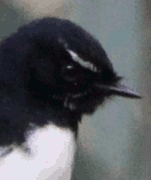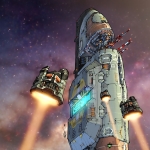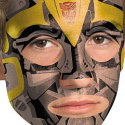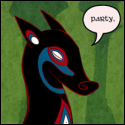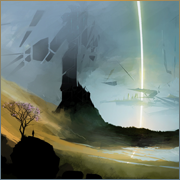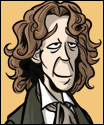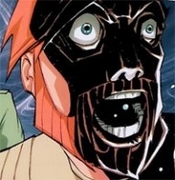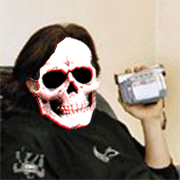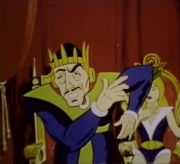|
I got all inspired by this thread to draw some spaceships. Turns out it's REALLY HARD and I gave up after 5 minutes. Any space artists ITT? Tell me your secrets
|
|
|
|

|
| # ? Jun 11, 2024 20:01 |
|
Draw from a single orthographic side shot and pretend it'll work in all the other angles.
|
|
|
|
Tree Bucket posted:I got all inspired by this thread to draw some spaceships. Turns out it's REALLY HARD and I gave up after 5 minutes. They're basically all penises so just draw one of those and put a laser gun on it somewhere
|
|
|
|
Tree Bucket posted:I got all inspired by this thread to draw some spaceships. Turns out it's REALLY HARD and I gave up after 5 minutes. The way I do it is try drawing out like a blueprint of like the side and top, maybe even front and back to have an idea of the physical shape of the ship that you're trying to draw, and then you can draw a more dynamic view of the ship from an angle. The original Star Wars Essential Guide to Vehicles and Vessels is the best example.  And when you're drawing out the full vehicle shape, you're essentially building it out of simpler shapes. You can see how the artist in that book uses a lot of guidelines to help him figure out the ship's position and orientation in 3D space, that's a common drafting technique. If you're trying to invent your own kind of vehicle to draw you can do a bunch of small preliminary sketches to help brainstorm, and if you're drawing something from an established property, there's nothing wrong with using references. Many people who like to draw will often say that they have trouble drawing vehicles, and a large part of that is because your brain is designed to want to recognize faces and the human form, and you can just kinda feel it out more. When drawing inanimate objects you either have to just figure out the mechanics of how simple shapes build up into a larger one, or you have to trick your brain into using something like its facial recognition systems for the objects so you can go more freeform. But most importantly, don't be afraid to fail! Doing stuff is hard, and it's common for a piece of art to look terrible when you're only partway through.
|
|
|
|
 These made me think wider about that challenge a couple years ago First result on google https://nerdist.com/article/artist-spaceships-household-objects/ ThisIsJohnWayne fucked around with this message at 17:18 on Sep 13, 2022 |
|
|
|
One of the things they did on Rogue One to find the shape of the main ship was to issue a challenge to the art department to spend no more than 90 seconds drawing a ship, just to try and find cool shapes. At this point they were leaning towards something like a catamaran with two hulls, so a lot of the designs have the outstretched arms that would eventually find their way into the U-Wing. The original Star Wars ships were designed from thumbnails as well, based on crude drawings from George Lucas:   The RF-1 Dart obviously became the X-Wing, but the others found their way into the movie as well. The idea for a "stingray" shaped vehicle eventually became the Millennium Falcon, and the three-seater torpedo fighter evolved into the Y-Wing, gradually losing the two extra crew members. Getting that immediately identifiable silhouette, even in a super basic form, can go a long way.
|
|
|
|
Robot Style posted:The idea for a "stingray" shaped vehicle eventually became the Millennium Falcon, Did it? The legend I've always heard is that they had to invent the Falcon out of nothing at the very end of the design process a few weeks before filming, because Space 1999 came out and the planned Falcon (Tantive IV with a Falcon style cockpit instead of the cylinder on the front) was too similar to the Eagle. The story as told is that they were like 'well gently caress' and decided to try to come up with something totally unlike anything seen before and Lucas got there by playing with a cheeseburger. That part is a very pat story and I could see it being apocryphal, but I'd always thought the last minute from scratch stuff was well established. MikeJF fucked around with this message at 19:12 on Sep 13, 2022 |
|
|
|
Well, there's a few stories floating around out there: From Lucas: Making of Star Wars posted:“The flying hamburger was my favorite design,” Lucas says. “I thought that the other design was too close to Space: 1999 and too conventional looking. I wanted something really off the wall, since it was the key ship in the movie; I wanted something with a lot more personality. I thought of the design on the airplane, flying back from London: a hamburger. I didn’t want it to be a flying saucer, but I wanted to have something with a radial shape that would be completely different from anything else.” And the recent ILM documentary on Disney+ offers a different interpretation: Joe Johnston posted:I went home, and I had this mental block because George had sent me off to design this new ship, and they wanted it right away. But the original ship was nearly finished. Grant McCune had already finished the cockpit, and he had finished the radar dish, so he said "do me a favor and use this radar dish, and use the cockpit". I said "okay, I can do that". Regardless of who's telling the truth, once the design was chosen, the ship began to be referred to as the "pirate manta-ship" in subsequent scripts and storyboards. Regardless of what actually inspired the design itself, it seems likely that Lucas' idea for a sting ray ship was still bouncing around in his brain and had some influence on the approval of the Falcon's familiar design. Lucas' manta fixation goes beyond A New Hope as well. In the notes he provided to licensees after the movie came out, he said that the Millennium Falcon was built by the denizens of the planet Crell, a gaseous planet populated by "winged porpoises with clawed hands" - implying that they built the ship in their own image. He'd later return to the "air whale" concept with manta-like creatures intended to be ridden by the denizens of Bespin:  These creatures would resurface 20 years later, ridden by the Kaminoans in Attack of the Clones. 
|
|
|
|
It is hard to visualize a space ship that isn't based on some kind of animal. Bird is an easy go too, but so is bug or fish. Its like that or you get a box with doodads on it. Federation ships, at least before the designers got lazy and slapped a some nacelles to a saucer at different angles, we're some of the most inventive designs.
|
|
|
|
The ILM story about the origin of the Millennium Falcon is most likely the truth because its the only ship that wasn't concepted by Ralph Mcquarrie. It just appeared whole and complete in the film. All the early concept art had the space 1999ish looking ship instead.
|
|
|
|
MikeJF posted:Draw from a single orthographic side shot and pretend it'll work in all the other angles. Way ahead of you on that one!! SlothfulCobra posted:The way I do it is try drawing out like a blueprint of like the side and top, maybe even front and back to have an idea of the physical shape of the ship that you're trying to draw, and then you can draw a more dynamic view of the ship from an angle. The original Star Wars Essential Guide to Vehicles and Vessels is the best example. Sound advice. I'll stick with it. Have you considered posting any of your own stuff itt?
|
|
|
|
The ILM documentary actually revealed a lot of proto-Falcon designs from Johnston's end of things. Prior to the documentary, the only known "transitional" design for the ship was this photo, which was found in the Lucasfilm archives when they were working on Solo:  But then the ILM documentary came out and showed off a bunch of Johnston's other sketches that never made it as far as the more polished illustration in the photo:       
|
|
|
|
Lucas really doesn’t come off as… good at all in that doc. “I am so proud of asking the impossible and somehow my staff used 25 hours out of each day to use their amazing talents to actually pull it off even though I constantly told them how disappointed I was in everything they produced that I then took total credit for in retrospect!!!”
|
|
|
|
Tree Bucket posted:I got all inspired by this thread to draw some spaceships. Turns out it's REALLY HARD and I gave up after 5 minutes. Because I'm a worldbuilding nerd, one thing I like to use to inform designing fictional spaces is to give consideration to 'form follows function' and think about what shapes a thing would need to have to perform certain functions. A tug should be small and have very precise maneuvering control, but massive engines so it can haul heavy payloads - and it needs a way to attach them, whether it's tractor beams or a length of tow line wrapped around a deck cleat. A warship's shape is dictated by the environments it needs to fight in and the weapons it needs to employ (or defend itself against). All of those things are impacted by the way the physics of that universe dictate the ship move, how often it can replenish itself, how it heats and cools itself, how it detects other spacecraft, etc. You get to define all those things, but this "form follows function" stuff is how you end up with consistency across your ship designs if they all belong to the same civilization in the same universe. One of the early design constraints on Star Trek ships was that warp nacelles have to be paired, and have to have line-of-sight of one another. Obviously that restriction got relaxed significantly later on, but it helped define the visual language of Starfleet ship design so powerfully that one can still use it as an indicator that a given design came from, or at least was significantly inspired by, the Star Trek universe decades later. The design of a warp nacelle itself is informed by what it does - it consistently has a (highly unrealistic depiction of a) Bussard collector on the front, but because it doesn't emit a jet of matter out the back, there's no aperture there, just a smooth tapering glowing nacelle. It's never been clear why the nacelles emit light, but maybe that's a stylistic choice, or maybe it's necessary for the warp drive to function - who knows, that's never been established in canon. But that's the sort of thing to consider, if you're trying to build to a particular universe. Needless to say this is the exact, diametric opposite exercise from the "90 second drawing limit" one, which is also good, just stretches a different set of mental muscles. IMO an ideal spaceship is a blend of both (or picking one of the 90-second design that is within bounds of the limits defined by the universe you're working in, at least).
|
|
|
|
jeeves posted:Lucas really doesn’t come off as… good at all in that doc. There's a moment in one of the documentaries on the Episode II DVD where he says pretty much the same thing and it's framed as some kind of triumph, but the VFX processes and pipelines he developed for the prequels are still being used today, and I think have contributed at least a little to the abuses that go on in the industry. Like yeah, people will push themselves beyond their limit to work on a Star Wars movie, but then that kind of performance is expected on every movie and you end up with with people quitting the industry because of the working conditions on Zoolander 2.
|
|
|
|
That one just looks like someone is making a puppet out of an oven mitt and their middle finger is the cockpit.
|
|
|
|
It's basically the YT-2000 with small dick energy.
|
|
|
|
tribbledirigible posted:It's basically the YT-2000 with small dick energy. The Manlenium Falcon
|
|
|
|
EC Henry just put up a massive project imagining the Colin Cantwell Dart as an X-wing prototype, with a full backstory and tons of renders.      Cameos by the Cantwell Star Destroyer and TIE. Much more here: https://www.youtube.com/watch?v=UvO920W2YRA
|
|
|
|
SoylentCola posted:The Millennium Faldong FTFY
|
|
|
|
|
mods please rename me the millennium failson
|
|
|
|
Tree Bucket posted:Have you considered posting any of your own stuff itt? Honestly most of what I have done is more sketchy and more brainstorming ships to put into a story since it helps me to think visually even if I'm only writing verbally, so there's a lot that's just diagrams and even the few more dynamic pictures I've made are still in pencil and I'm bad at digitizing my work in general. Also I kinda stalled out writing and sketching for a while so if I do get something I can show I guess I'll put it up.
|
|
|
|
I have a secret theory that the reason the Millennium Falcon is such a great design is that it closely follows the shape of a left hand. Disk as the hand proper, mandibles as fingers and cockpit as thumb. How many kids "flew" their hand just outside the window while they sat in the back seat of the car? Darth Brooks fucked around with this message at 04:37 on Sep 25, 2022 |
|
|
|
Magneto's magno-ship, from 1964. Very silly, but it's a neat concept. I don't think it even is supposed to have much of its own propulsion system, just Magneto pushes it out and pulls it back in with his own powers from his base on Asteroid M. I don't think the comics ever sit back and look at it all, but in just going up to the 80s, Magneto has had high-tech secret bases in the depths of space, a secret abandoned city in Carlsbad Caverns, a sunken island from a lost civilization that he raised up from the sea, a volcano, and in the Savage Land, the ancient preserve for dinosaurs and other theoretically extinct species. Asteroid M was the first, and still pretty hard to outdo. The 90s animated series had less funny high-tech drop pod buckets that Magneto towed more directly.  X-Men Evolution used neat but not very interesting featureless orb design, and there was also a whole thing where he pitted his brotherhood against the X-Men in one-on-one fights where the winner would be forcibly abducted to Asteroid M for...some reason, it's been a long while since I watched it.  
|
|
|
Stumbled on some cool visualizations of an O'Neill Cylinder, a type of large space habitat theorized by physicist Gerard K. O'Neill in the 70s. O'Neill's plans are detailed in the book The High Frontier: Human Colonies in Space, with some preliminary engineering calculations and a few paintings:  Exterior and interior views, each hollow cylinder is divided lengthwise in to three land and three window strips, the windows let in sunlight bounced off long angled mirrors. The cylinders spin for artificial gravity, two spinning in opposite directions are connected so the gyroscopic effects of their rotation cancel and it's easier to keep them pointed at the sun. This design has since become a sci-fi staple. Erik Wernquist did some 3D animation for a recent documentary about O'Neill, also including O'Neill's idea that the construction materials for these cylinders would come mostly from the moon, and be launched via linear accelerator "mass drivers." Wernquist is definitely paying homage to the old paintings and to the 70s in general, to the extent of using the famous Apollo 17 "Blue Marble" photo of a full Earth in the shot of the cylinders. https://vimeo.com/516619828   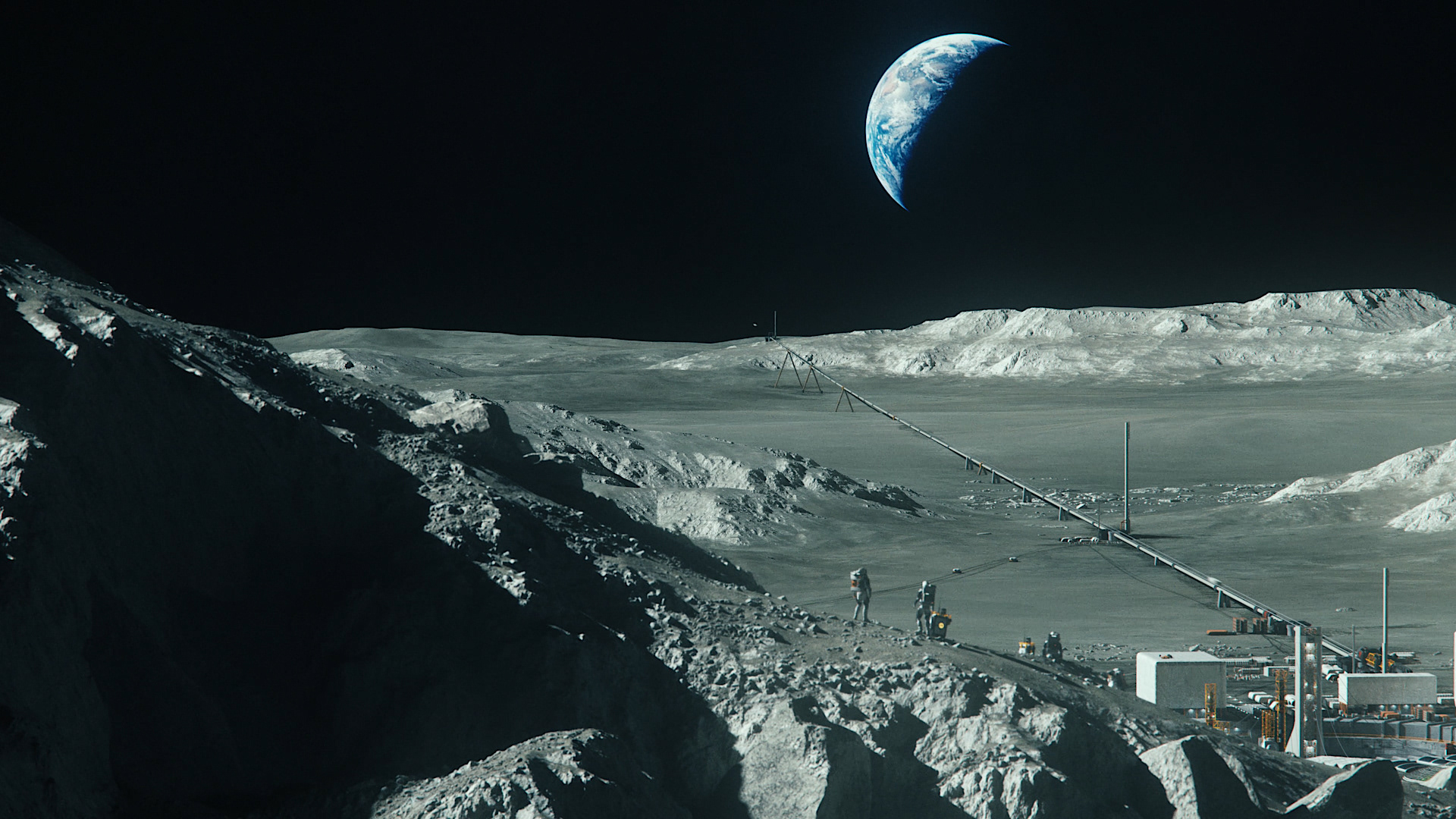 He also did a more detailed interior for another project, you can see that at about one minute in to this video: https://vimeo.com/547454250 
|
|
|
|
|
It always seemed a little odd to me that a full half of the cylinder interior surface would be unusable thanks to being windows, I feel like there has to be a more efficient design.
|
|
|
|
At least part of the rationale for the windows being so wide is human psychological comfort - breaking up the land strips like that gives you semi-sensible "horizons" or "valley crests" looking perpendicular to the long axis, instead of more and more land curving up over you, possibly sickeningly. At roughly four miles in diameter, with each window or land strip two miles wide, the window strip "above" (across from) you is only about 30 degrees of arc wide from your POV - three fists at arm's length, side by side. And that's only if you're looking straight up. It's supposed to be your sky, the mirror treated to soften the sun's glare and reflect a diffuse blue all over, instead of a small harsh sun reflection and black space everywhere else. A nice skylight, far wider than it needs to be to bounce the disc of the sun in. I could see how making it skinnier could make things claustrophobic and or dizzying, depending on how hazy the contained atmosphere is and how clear your view. O'Neill was writing about these bigger/later stations in a sort of utopian fashion, arguing that they'd be preferable to Earth and less densely populated. So maximally efficient space use isn't a big worry, at least in the human sections. The plants in the farm sections don't need long views or simulated blue skies, so they're diced up in to the much smaller cylinders that make better use of space and materials. Prolonged Panorama fucked around with this message at 08:03 on Oct 7, 2022 |
|
|
|
|
MikeJF posted:It always seemed a little odd to me that a full half of the cylinder interior surface would be unusable thanks to being windows, I feel like there has to be a more efficient design. A lot of concepts use mirrors to direct sunlight into the interior of the cylinder, which is why you need the windows. Seems extremely dangerous though.
|
|
|
|
Obligatory Citadel from Mass Effect mention here  https://www.youtube.com/watch?v=qpB3Lr9HFTQ
|
|
|
|
They're all fun and games until one crashes onto Australia
|
|
|
|
They make great mass driver weapons.
|
|
|
|
Arc Hammer posted:They make great mass driver weapons. Looks more like a mass driver projectile to me
|
|
|
|
Prolonged Panorama posted:At least part of the rationale for the windows being so wide is human psychological comfort - breaking up the land strips like that gives you semi-sensible "horizons" or "valley crests" looking perpendicular to the long axis, instead of more and more land curving up over you, possibly sickeningly. At roughly four miles in diameter, with each window or land strip two miles wide, the window strip "above" (across from) you is only about 30 degrees of arc wide from your POV - three fists at arm's length, side by side. And that's only if you're looking straight up. It's supposed to be your sky, the mirror treated to soften the sun's glare and reflect a diffuse blue all over, instead of a small harsh sun reflection and black space everywhere else. A nice skylight, far wider than it needs to be to bounce the disc of the sun in. I could see how making it skinnier could make things claustrophobic and or dizzying, depending on how hazy the contained atmosphere is and how clear your view. It's also necessary if you want to have lighting without relying on streetlights for everything. And if you're doing farming, which would be an important step of fully colonizing space, it might be more practical to use natural light. Weirdly Mass Effect doesn't make use of the Citadel's design for lighting at all so far as I know. The Presidium is on a day/night cycle, but it's in the middle and does it artificially without the O'Neill solution. In the later games you visit the wards, and it seems like they're mostly indoors, and in the bits that are exposed to space, it's just "night" with no fake sky. Babylon 5 was a cylinder, but didn't have big windows. Most of the interior is rooms and hallways, like it's just one big building, but they do have the middle section that's all green space and farming. No idea how it's supposed to be lit though.  Gundam has big cylinder colonies, but I think it also has wheel-shaped colonies as well. I think I remember seeing pictures of the two being used to differentiate the After Colony and Universal Century timelines, but I can't find pictures to check. There was also G-Gundam, which sort of, almost does classic circular create-gravity-from-centrifugal-force space colony designs, but then it takes a HARD turn. https://twitter.com/g0ffthew/status/1325977100981997570 
|
|
|
|
MikeJF posted:It always seemed a little odd to me that a full half of the cylinder interior surface would be unusable thanks to being windows, I feel like there has to be a more efficient design. I also thought huge windows in space is a bad idea if not impossible to do.
|
|
|
|
Linux Pirate posted:I also thought huge windows in space is a bad idea if not impossible to do. If you've got Future Engineering you can probably manufacture them out of sheets of diamond, it's just carbon.
|
|
|
|
Gravitas Shortfall posted:If you've got Future Engineering you can probably manufacture them out of sheets of diamond, it's just carbon. To add onto this, the atmospheric volume of a colony cylinder is hundreds of cubic kilometers IIRC, so anything short of a catastrophic blowout will take days before it's A Problem. Threats can also be mitigated by ensuring that buildings and shelters are capable of sealing. The windows would probably be divided up into panels for ease of manufacturing and repair, I don't see any reason there couldn't be external or internal sliding shutters that could close over a pane during punctures or for repair & replacement.
|
|
|
|
Here's an artist's rendering of the Galileo from Allen Steele's Spindrift. It does not end well for this ship.
|
|
|
|
Vernii posted:To add onto this, the atmospheric volume of a colony cylinder is hundreds of cubic kilometers IIRC, so anything short of a catastrophic blowout will take days before it's A Problem. Threats can also be mitigated by ensuring that buildings and shelters are capable of sealing. The windows would probably be divided up into panels for ease of manufacturing and repair, I don't see any reason there couldn't be external or internal sliding shutters that could close over a pane during punctures or for repair & replacement. Why fill the entire interior of such a habitat with breathable air though? It seems like it would be a lot more efficient to just fill the area the people live in with air and then have the rest of the cylinder be empty space. Like where does the air even come from? I would think it would be super difficult to bring that sort of volume up from earth.
|
|
|
|
A long hose to the planet
|
|
|
|

|
| # ? Jun 11, 2024 20:01 |
|
I've read multiple stories with O'Neil cylinders where there are no windows. Instead the light comes in via fiber optic light pipes which are arranged around a central axis hub. Which is also a transport system reached from regularly spaces support pylons.
|
|
|



